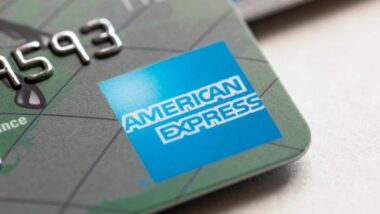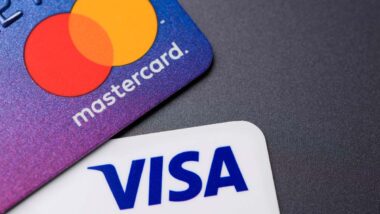Top Class Actions’s website and social media posts use affiliate links. If you make a purchase using such links, we may receive a commission, but it will not result in any additional charges to you. Please review our Affiliate Link Disclosure for more information.
What’s the difference between a currency conversion fee and a foreign transaction fee? The terms “currency conversion fee” and “foreign transaction fee” can be difficult to distinguish but, while both fees will sometimes apply on the same transaction, there are important differences between the two.
What Is a Currency Conversion Fee?
A currency conversion fee—sometimes referred to as a “foreign currency conversion fee” or “foreign currency exchange fee,” making distinguishing the terms in question even more difficult—is a charge tacked on to a transaction by a foreign merchant that covers the conversion of foreign currency into dollars.
The amount of the currency conversion fee is calculated, in the case of a purchase, by your credit or debit card payment processor, and in the case of a withdrawal, by your ATM network. It may also be calculated at the point of sale itself using dynamic currency conversion (DCC).
DCC rates tend to be worse than the rates charged by credit card payment networks, however, so it is often better to say no to DCC. If you say no to DCC at point of sale, the merchant will still be able to charge your card and make the payment, and your credit card payment network (Visa, MasterCard, Discover or American Express) will do the conversion itself.
If you want to know the price of a transaction but aren’t familiar enough with the currency to do quick conversions in your head, there are tools for that, such as calculator apps provided by Visa and MasterCard, or even just using Google.
Oftentimes, a currency conversion fee can be confused with a foreign transaction fee. The main reason that a currency conversion fee is frequently mistaken for a foreign transaction fee, other than their similar-sounding names, is that currency conversion fees are often included inside of the foreign transaction fee on credit card statements.
What Is a Foreign Transaction Fee?
A foreign transaction fee sounds similar to a currency conversion fee, but they are actually different. A foreign transaction fee—also called a “foreign purchase transaction fee” or “foreign currency transaction fee”—is charged by a financial institution when a consumer uses an electronic payment card to make a purchase or withdrawal in a foreign currency.
This most commonly affects purchases made using a card while traveling in foreign countries—with certain exceptions made in nearby countries like Canada or Mexico. However, not all credit and debit card issuers charge this per-transaction fee for purchases or withdrawals overseas. Capital One and Discover are the main card issuers to charge no foreign transaction fees.
Foreign transaction fees may in some cases also be charged on purchases made online from a foreign vendor, even if the purchaser is in their home country if the foreign vendor processes the transaction in its local currency.
However, some consumers claim that these foreign transaction fees should only be charged on purchases that are made at physical, brick-and-mortar stores outside the U.S., not on purchases made through foreign websites while in the U.S.
Value Penguin elaborates, explaining that in contrast to a conversion fee, a foreign transaction fee is charged specifically when a purchase passes through a foreign bank, or if the purchase is made in a foreign currency.
These charges can be hard to spot, so many customers may end up incurring these fees without being aware of them. These fees may be hidden in documentation and contracts from your bank, so when you sign up for an account, you may not be aware that you could ask be signing up for foreign transaction fees. According to Value Penguin, you may be able to find these fees disclosed in the terms and conditions of your card or account, possibly in a section like “Pricing and Information.”
Banks often hide a range of fees in their contracts, assuming that many customers will sign up for an account without reading the fine print. Unfortunately, foreign transaction fees may be one of these fees.
Even after you are charged a foreign transaction fee, you may discover that it is hard to spot. They sometimes are labeled as an “FX fee” on a statement, which may be easy to miss.
To make these fees more confusing, they have changed in recent years. According to Value Penguin, what is considered as a foreign transaction has changed due to advances in technology. Reportedly, around ten years ago, only transactions that occurred on foreign soil incurred a foreign transaction fee.
Now, as technology has advanced, and more people are making transactions with businesses around the world, purchases often incur foreign transaction fees simply if they pass through a foreign bank.
 Which Sites Are Charging Online Fees?
Which Sites Are Charging Online Fees?
A major hint that a purchase through a foreign website will incur a foreign transaction fee is if you see prices listed in non-U.S. currency.
Websites that often charge these fees include international travel booking sites in particular. Even if the website itself is based in the U.S., if the company you’re booking with (hotel, airline, etc.) is overseas, your bank may charge a conversion fee. Purchases made through U.S.-based hosting sites from overseas merchants may similarly incur a fee.
What Are Banks Charging for Foreign Transaction Fees?
Banks charge a range of foreign transaction fees. For a foreign debit card purchase, Alliant charges 1% of the purchase cost; Ally charges up to 1%; Navy Federal Credit Union charges either 0.8% or 1%, depending on if there’s a currency conversion involved; and UnionBank charges 2%. Bank of America, Chase, Citibank, and TD Bank all charge 3%.
For a foreign ATM withdrawal, Alliant charges 1% of the withdrawal amount—though it reimburses up to $20 each month for out-of-network ATM fees, which includes ATMs while abroad. Ally charges up to 1% of the withdrawal amount. Bank of America and Chase both charge $5 + 3% of the withdrawal amount, though ATM balance inquiries only incur a $2.50.
For non-Citibank ATMs, Citibank charges $2.50 + 3% of the amount, and Navy Federal Credit Union charges $1 + 0.8% or 1% of the amount, again depending on if there’s currency conversion. TD Bank charges a flat $3, and UnionBank charges a flat $5.
It’s important to remember that these fees can add up quickly. Fortunately, some financial institutions do not charge debit card foreign transaction or ATM fees. These include:
- Capital One
- Charles Schwab Bank
- Discover Bank
- Varo
While these banks themselves do not charge foreign transaction fees, keep in mind that an out-of-network ATM operator might charge a fee.
What Do the Fees Cover?
To break it down to its most basic, this is what each fee covers:
- Foreign transaction fees are imposed by the credit card issuer and cover overseas credit card transactions
- Currency conversion fees are imposed by the transaction processor and cover overseas currency conversion
- Dynamic currency conversion is imposed by a foreign merchant and covers overseas conversion at point-of-sale
How Much Are Currency Conversion Fees?
Currency conversion fees for a typical credit card is one percent of the purchase price. DCC fees are generally between one to three percent of the purchase price, though it can be higher (even up to 12 percent), and usually, a foreign transaction fee is between two to three percent. The currency conversion fee is tacked onto the foreign transaction fee.
In some cases, you can incur both a foreign transaction and currency conversion fee at the same time, in which case the currency conversion fee is tacked onto the foreign transaction fee. This is because the foreign transaction fee is charged based on the location of the purchase, not on the currency it is dominated in.
While three percent may sound like a small number, the fact that it is a percentage system, and these fees are often incurred on travel costs, means that consumers who are paying thousands of dollars on hotels, flights, and more may be charged fairly significant fees.
How Can You Avoid Being Charged?
Traveling is expensive enough as it is—when possible, it is best to avoid incurring additional charges onto the purchases you make while abroad. And oftentimes, people aren’t even aware they’re going to be charged these hidden fees; simply checking the total at the end of purchase may not be sufficient, as a fee may be tacked on even after the fact.
There are a number of ways to either avoid or at least minimize the conversion and transaction fees you incur while traveling.
First, familiarize yourself with the terms and conditions of the card you will be using while traveling—what fees can you expect? You may even be able to apply for a “no fee” card prior to traveling if you do it early enough. There are many credit cards that don’t charge foreign transaction fees at all. Typically, travel rewards credit cards don’t charge this fee, but it’s definitely worth double-checking so that you’re not caught by surprise.
Check to see if your bank belongs to a “no fee” or “low cost” global ATM network—in which case, trips to the ATM while abroad wouldn’t be so costly. If not, get cash in the applicable foreign currency before you go to minimize how often you need to access an ATM (though use caution, as pickpocketing is a risk). Avoid high DCC costs by paying in local currency whenever you can. It may be helpful to download an app that will show you the currency exchange rate.
Some consumers argue that foreign transaction fees are legally only allowed on purchases physically made outside the U.S. and that such charges on purchases made via the internet are not valid. Indeed, more and more banks are facing legal action by consumers who allege that the foreign transaction fees they were charged on credit and debit card purchases made while in the U.S. through foreign websites are actually illegal.
While foreign transaction fees may often apply to online purchases to merchants outside the U.S., the fees may actually violate the bank’s own contracts.
Filing a Foreign Transaction Fee Lawsuit
Consumers who were charged foreign exchange fees for online purchases they made while in the U.S. may be able to take legal action.
If you were charged a foreign transaction fee on a purchase you made from the U.S. through a foreign website, you may be able to join this class action lawsuit investigation and pursue compensation, including recovering the amount charged in fees and possible additional compensation through damages.
Filing a lawsuit can be a daunting prospect, so Top Class Actions has laid the groundwork for you by connecting you with an experienced attorney. Consulting an attorney can help you determine if you have a claim, navigate the complexities of litigation, and maximize your potential compensation.
Join a Free Foreign Transaction Fees Class Action Lawsuit Investigation
If you were charged a foreign transaction fee on a debit card or credit card purchase made on a foreign website, you may qualify to join this foreign transaction fees class action lawsuit investigation.
This article is not legal advice. It is presented
for informational purposes only.
ATTORNEY ADVERTISING
Top Class Actions is a Proud Member of the American Bar Association
LEGAL INFORMATION IS NOT LEGAL ADVICE
Top Class Actions Legal Statement
©2008 – 2024 Top Class Actions® LLC
Various Trademarks held by their respective owners
This website is not intended for viewing or usage by European Union citizens.


 Which Sites Are Charging Online Fees?
Which Sites Are Charging Online Fees?













One thought on What’s the Difference Between a Currency Conversion Fee and Foreign Transaction Fee?
Please add ne